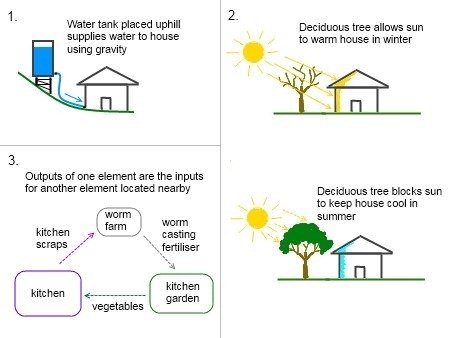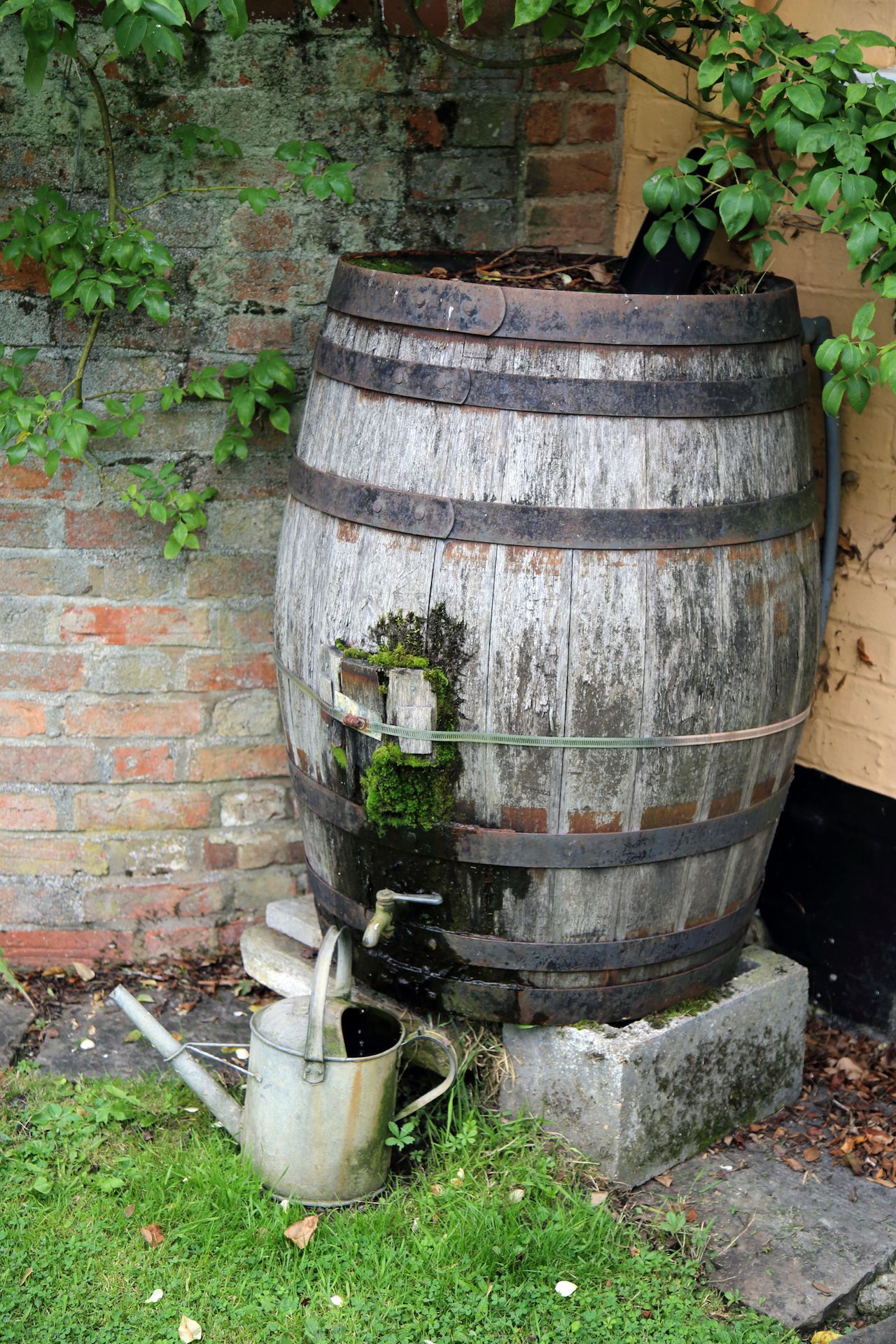Permaculture Primer
Generally speaking, the principles of permaculture can be applied to a variety of disciplines, ranging from land stewardship and ecology to smaller scale applications such as homesteading and backyard gardening. On the largest scale, permaculture can help improve processes in commercial farming and the cultivation of food forests, by employing several fundamental practices. The methods involved seek to imitate nature by employing specific designs that incorporate a variety of elements, aiming to maximize landscape potential by encouraging biodiversity, working with the landscape, and utilizing resources efficiently.
The average American yard consists of mostly grass, some weeds, flowers, a few trees, shrubs, and possibly a small vegetable garden. In more affluent regions of the country, there are most likely going to be larger impervious areas (such as driveways, paved walkways, underground pools, etc), which are not so conducive to permaculture, but there are still possibilities even in those places. That is the beauty of permaculture gardening and landscaping! The methods involved can be pieced together in less habitable environments, and can also be utilized to manage large biodynamic systems, organic farms, or urban edible forest gardens.
At the heart of the permaculture ethos is the art of practical sustainability. We can use our creativity and ingenuity to establish systems that will self-correct and work in harmony with nature, to supply us with the nutrients we need to sustain our bodies and regenerate our minds and spirits amidst beautiful, living green spaces. Have you ever experienced a lush garden that just seems to sing with life and energy? That's the harmonious balance which nature so gracefully succeeds in accomplishing; it can also be achieved, and even enhanced by mimicking the processes, arrangements, and efficiencies that define permaculture design.
First of all, we must consider “relative location,” in respect to overall design and the placement of elements included in the permaculture garden. We have to be aware of our surroundings, and set things up in a way that makes sense. A lot of this is just common sense, but when it comes down to fine tuning things, this will take a little more forethought and planning. But, in starting out, we must observe what is already in place, take note of the sun’s trajectory at various time of year, consider high and low points in the landscape, and locate elements accordingly.

Photo: Deep Green Permacutlure
We also have to think about all the various functions the elements involved in our permaculture designs are capable of performing. We can better maximize the usefulness and efficiency of the entire system, if each piece is analyzed to determine the various purposes it can serve. For example, a fruit tree could be grown to produce food, but it could also serve as a windbreak or to help provide shade for plants that prefer partial sunlight. Likewise, we must also assess how each function of the garden can be supported by various elements. This is especially important for essentials like water. We can usually rely on rainwater and municipal water supplies, but it is helpful to have other sources made available by harvesting rainwater, reusing straight grey water, or through purifying waste water, to be recycled and utilized later for watering the garden.
Another key feature of the permaculture approach is the utilization of often readily available “biological resources” that can help sustain, nourish, and protect our gardens. There are plenty of natural alternatives to things such as synthetic fertilizers, pesticides, and even methods like soil tillage, which can be utilized to keep with the natural methodology of permaculture. Also, in relation to using biological resources, energy is better utilized in the permaculture garden through processes such as composting, mulching with fallen leaves, capturing solar and wind energy; and as I mentioned before, greywater and rainwater harvesting.
There are many other methods and principles that can be discussed in relation to permaculture, which can be applied to either a small scale backyard garden or a full-fledged organic farm. Either way, the design of the systems to be put in place are typically made to be easily manageable and very productive. We can either work with nature and help along the sustainable, balanced, and efficient processes that she has evolved over hundreds of thousands of years, or we can struggle against her by forcing crops to grow neatly in rows and applying chemical fertilizers and pesticides to try and correct the problems that we create by imposing unnatural methods upon her. The former will leave everyone involved more satisfied, fulfilled, and healthy, and the latter will only lead to more problems and complications such as soil erosion, toxicity, and nutrient depletion.
There are many good resources available to get started with permaculture, whether you want to apply the principles to gardening, landscaping, native habitat restoration, homesteading, or all of the above. For more information, please follow the links included in this article, or check out this great website, called Deep Green Permaculture, which I’ve used to outline the discussion above. I would also highly recommend the book, The Permaculture Garden




As a horticulture and agricultural science major, I appreciate this post and bringing awareness to some of the permaculture principles. I got my permaculture design certificate just last year. Cheers!
Awesome, thanks for the feedback! I don't have any formal education in the subject, I just experiment and study as I go.
Great post @lkisaid ! If you have a piece of land, learning to grow things naturally with all the resources the land has available is one of the most fulfilling things to do. 🌻
I agree!
Upvoted on behalf of @thehumanbot and it's allies. Write less but write great original content, and do not use bid bots for at least 1-2 days, for your post to be recommended to other curators. If you are using any image or video, cite proper source. Even if its your own image or video, it's worth mention the same. Also be careful to avoid duplicate posting.
Great Original Works are rewarded by top Curators, refer posts from my Step-Brother @humanbot for more details.If you like this initiative, you can follow me in SteemAuto and upvote the posts, that I upvote.
And remember to do some charity when you are rich by contributing to me. Check out my Introduction Post for more details. If you have any concerns or feedback with my way of operation, raise it with @sanmi , my operator who is freaking in Steemit chat most of the time.
Thanks for the tips @thehumanbot. I'm not really sure how to use bid bots, but I will keep these things in mind.